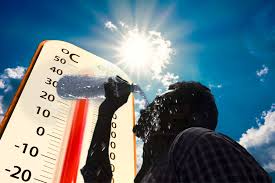Surviving Extreme Temperatures: Practical Tips for Heat Safety
Introduction
Extreme temperatures are becoming more frequent and intense due to climate change, making heat safety an increasingly important topic worldwide. excessive heat not only causes discomfort but also poses serious risks to human health, infrastructure, and daily activities. Heat waves claim thousands of lives each year, yet many of these outcomes are preventable with the right precautions. By understanding how to protect yourself and your loved ones, you can survive extreme temperatures more safely and comfortably.
Why Heat Safety Matters
When the body is exposed to extreme heat for prolonged periods, it can struggle to maintain its normal temperature. This can lead to dehydration, heat exhaustion, or even life-threatening heat stroke. Vulnerable groups such as children, older adults, outdoor workers, and individuals with chronic illnesses are at a greater risk. In addition, extreme heat puts pressure on power grids, healthcare systems, and community resources, making preparedness even more vital.
Recognizing Heat-Related Illnesses
Knowing the warning signs of heat-related illnesses can save lives:
-
Heat cramps: Painful muscle spasms often caused by heavy sweating and dehydration.
-
Heat exhaustion: Symptoms include dizziness, nausea, fatigue, and heavy sweating. Immediate cooling and hydration are essential.
-
Heat stroke: A medical emergency characterized by confusion, rapid pulse, high body temperature, and possible unconsciousness. Immediate medical help is required.
Practical Tips for Staying Safe in Extreme Heat
Stay Hydrated
Drink water frequently, even if you do not feel thirsty. Avoid excessive consumption of caffeine and alcohol, as they can worsen dehydration.
Dress Smart
Wear lightweight, loose-fitting, and light-colored clothing. A wide-brimmed hat and sunglasses can also provide protection when outdoors.
Limit Outdoor Activities
Try to schedule outdoor work or exercise during the early morning or late evening when temperatures are cooler. If you must be outside, take frequent breaks in shaded or air-conditioned areas.
Keep Your Living Space Cool
Use fans, air conditioners, or evaporative coolers to maintain a safe indoor temperature. Keep blinds or curtains closed during the day to block out heat.
Use Cooling Techniques
Take cool showers, apply damp towels to your skin, or soak your feet in cold water to lower your body temperature.
Look Out for Others
Check on elderly relatives, neighbors, and friends, especially those without air conditioning. Children and pets should never be left in parked vehicles, as temperatures inside can rise dangerously within minutes.
Preparing for Heat Waves
Preparation is key to surviving extreme heat. Stock up on bottled water, ensure your cooling devices are working, and know the locations of nearby cooling centers. Stay updated with local weather alerts to anticipate when heat waves may occur. Communities can also play a role by planting more trees, expanding green spaces, and providing public cooling shelters.
Conclusion
Surviving extreme temperatures requires awareness, preparation, and practical action. From staying hydrated to recognizing the signs of heat-related illness, these steps can protect you and those around you during dangerous heat waves. As climate change continues to intensify extreme weather, heat safety must become a priority for individuals and communities alike. For ongoing health updates and the latest wellness resources, yeemanews.com offers valuable insights to help you stay informed, safe, and resilient in the face of extreme temperatures.

